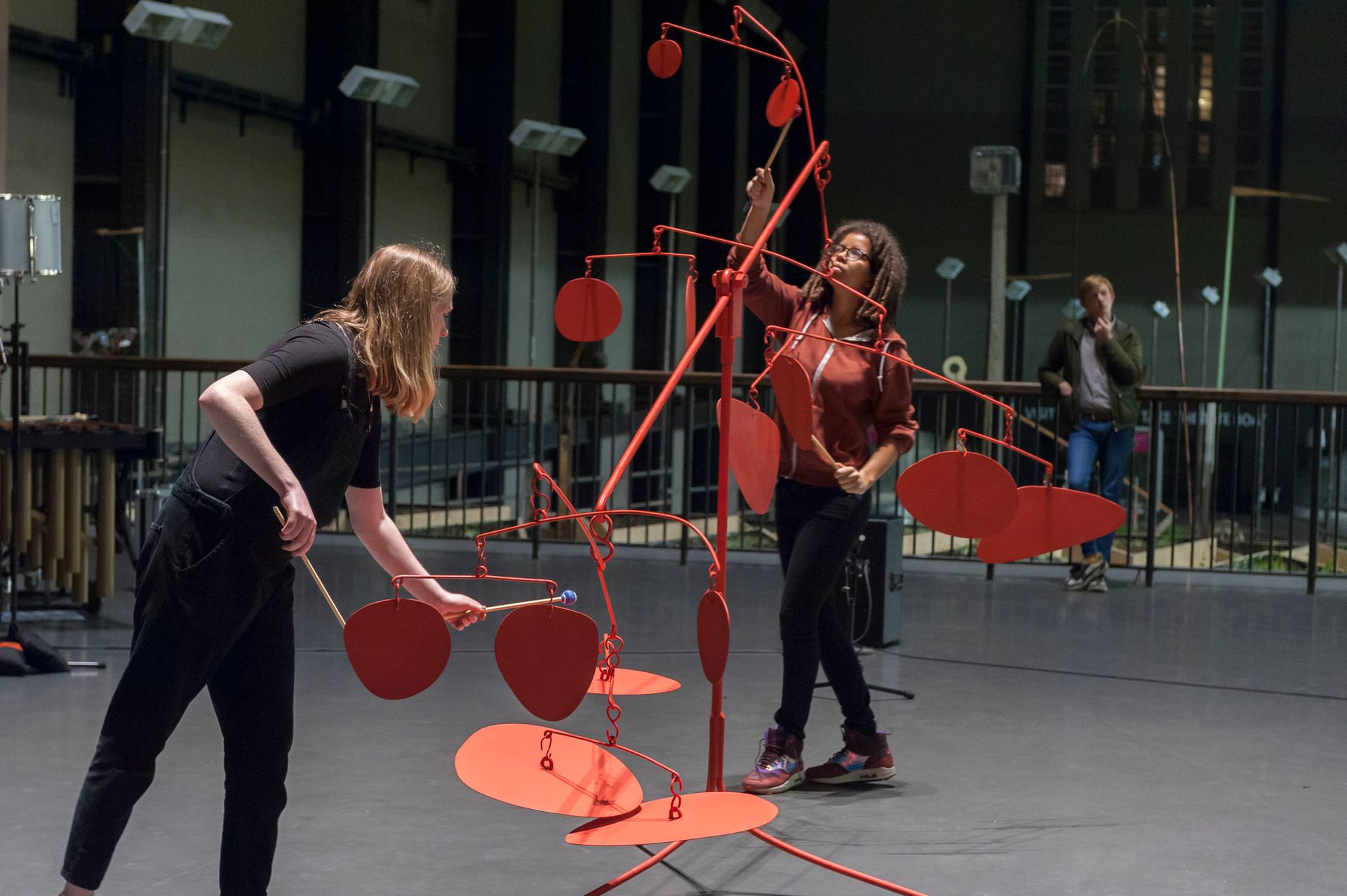It’s been a week of sculpture as moveable feast, with Alexander Calder’s Performing Sculpture, which opened at Tate Modern on Monday (until 3 April 2016), doing just that: the air currents generated by visitors deliberately cause the artist’s glorious mobiles to gently sway and rotate. While it is sad that the pieces with automated mechanical parts are now too fragile (and valuable) to be activated in this way, guests at the private view were treated to a rare rendition of the late Earle Brown’s Calder Piece in which Calder’s specially designed free-standing (and rather more robust) mobile Chef d’orchestre (1966) acted as both the conductor of and an instrument within the piece, which was performed on the Turbine Hall bridge by the Guildhall School’s percussion ensemble.

While there was certainly a frisson at seeing the plates of a Calder mobile being struck (albeit delicately), on the day before the opening an even more privileged few had been privy to the spectacle of Calder’s grandson Sandy Rower prodding the larger suspended ball of Small Sphere and Heavy Sphere (1932/33), so causing the smaller ball to strike the surrounding gong, box and bottles. This spontaneously percussive moment resulted in some sharp intakes of breath from the show’s curators, but as Rower is chair of the Calder Foundation, which owns the piece, they needn’t have worried unduly.
Further north, at the Hepworth Wakefield gallery in Yorkshire, hands-on sculptural interaction also seemed to be in the ether when, at Wednesday’s press view of Enrico David’s exhibition of new work, the artist scooped up one of the carefully placed cast-iron spheres that punctuate and syncopate his various pieces arranged throughout the largest David Chipperfield-designed gallery and handed it around, so that the assembled hacks could feel the weight and their slightly oily graphite-like patina. He then had the curatorial smiles tightening even further when he cheekily demonstrated how the suggestively phallic steel blade attached to one of his smaller bronze figures could be lifted up to slot unnervingly into the figure’s mouth. Of course, it’s an artist’s prerogative to play fast and loose with their work, and a treat for the rest of us to benefit from that freedom. Just provided we don’t try it ourselves…


